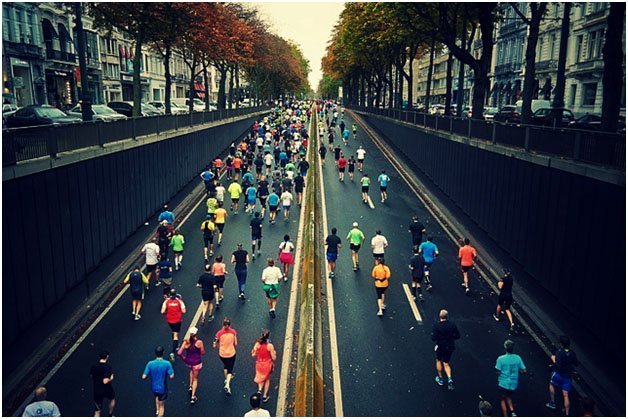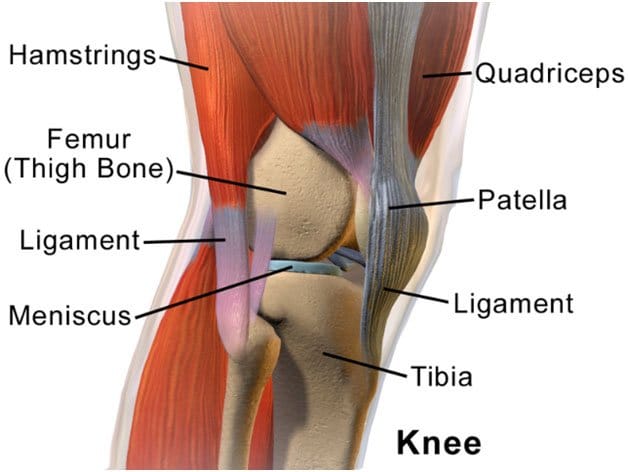The name “Marathon” has an interesting origin. It comes from the legend of Pheidippides who was a Greek messenger. According to the legend, he was sent from the battlefield of Marathon to Athens to carry the message that the Persians had been defeated. He ran the entire distance without stopping and when he burst into the assembly he yelled “we have won!” and then collapsed and died.
Nowadays, there are over 500 marathons held worldwide each year, and the number of participants goes over hundreds and hundreds of people. It takes time and effort to get prepared for running marathon, but like in any other sport there are some injuries that can prevent you from running with ease. Such injury happened to me and it is called runner’s knee. I can guarantee you that this knee injury is an ultimate marathon killer, and I would like to share with you what it is.

What is Runner’s Knee?
As the name itself tells you, this injury is common among runners, but it can also because by any repeated activities that stress the knee such as skiing, walking, soccer, cycling etc. Runner’s knee is a general term which describes any condition that can cause pain around the kneecap or patella, such as patellofemoral malalignment, anterior knee pain syndrome and iliotibial band syndrome.
Common Symptoms
The first symptoms of runner’s knee can resemble minor strains of muscles and ligaments. The hallmark of runner’s knee is aching and dull pain you can feel right behind your kneecap or patella, or behind them, especially around the part where they meet the lower part of thighbone. This annoying pain can be felt when walking, going up/down the stairs, squatting, kneeling and running. Some other, more serious symptoms, may include swelling and grinding or popping in your knee.

What Causes Runner’s Knee?
This knee pain can be caused by irritation of lining or soft tissues of the knee, strained tendons or worn and torn cartilage. Also, there are some movements and activities that can stress your knee and cause pain, such as trauma and misalignment of the kneecap, dislocations and fractures of the kneecap, flat feet, weak tight muscles, inadequate stretching and many other similar situations. Sometimes, the pain can start in some other parts of your body due to bad posture or overuse, and can gradually lower itself to the knee causing it to hurt.
Treatment
You do not need to give up on running or any other sports because of this knee injury. You just have to give treat it properly as soon as you feel pain. If the stress on the knee is too high, you should rest for a few days to keep knees relaxed. While resting you can apply some ice to the painful area up to 30 minutes and relieve the pain and swelling. Wrap your knee into an elastic bandage to restrict the swelling and keep it elevated when sitting or lying down to prevent further swelling. This kind of treatment is useful because it relaxes your knee and gives it the chance to rest.
Since running marathons is my passion, there is not a day when I skip the training. However, with this knee pain I have to be careful. It is smart to keep a small kit of medical supplies at your hand when preparing for a marathon or even during the one. You should keep any pain relievers for your knees or some other supplies for other injuries that may occur during the run. Also, if you want to keep running marathons you can always keep your knee secured into an elastic bandage or sleeve when on the move. This security will prevent any dislocations and additional stress to your knee, keeping it pain-free.

Can it be prevented?
Yes, like any other injury, runner’s knee can also be prevented. In order to do so, you should always stay in shape and lose any extra weight to keep the burden off your knee. Proper stretching before any exercises and running especially can greatly reduce your risks of having knee pain. When preparing for marathon, you should never start with hard and intensive trainings. To prevent any kind of injuries, not just knee ones, you have to gradually increase the intensity of your workouts. Proper comfortable running shoes are another key factor when preventing injuries. They have to be of good quality with the best shock absorption, never run in torn or worn out shoes, and if you have flat feet you should wear orthotics. Finally, good and right running form is important when staying healthy. Keep your knees bent and lean forward when running. Avoid any hard and bumpy surfaces or running on concrete, and if going down a steep incline you should run in zigzag patterns.
This is all I can tell you about runner’s knee. Do the best you can to prevent it so you would not have to retire from running too early. But if you already have this problem, do your best to protect your knees and keep them as stress-free as possible.


1 comment
very important article-manythxs
Comments are closed.